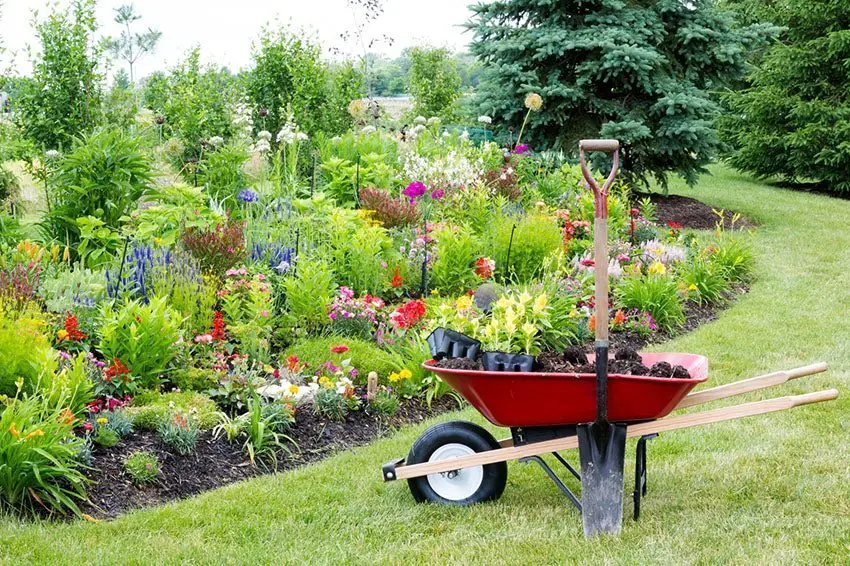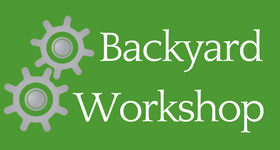Top Green Landscaping Tips for Beginners

Is your lawn as beautiful as it could be? These green landscaping tips for beginners are all about laying the foundation for a yard you can take pride in.
How does your garden grow? Is it overrun by weeds? Is the grass brittle or brown? Have bugs gotten to it, leaving gaping holes in leaves and plants? Maybe you’re not really sure how to care for your garden. It was just sort of there when you moved in. You haven’t paid it much attention. What better time than now to get outside and learn more about your garden? By landscaping yourself, you can tend to your plants, discovering what makes them grow. Of course, landscaping can waste a lot of water. That’s why green landscaping is in. You’ll reduce your water usage and still have a stunning garden.
Check out these green landscaping tips to get started!
Less Is More
Your interest in gardening is renewed. You can’t wait to get outside and plant as much as you can. Maybe you’ll start with flowers. Perhaps you’ll grow a vegetable garden. You also definitely want to harvest your own fruits. In your state of excitement, you might want to plant as much as your little garden can handle, maybe even more. This can actually hurt your garden in the long run, though.

Plants, fruits, vegetables, and flowers grow differently. Even two flower species may have different growing requirements. These plants need to have space so they can grow to their full potential. When you crowd a plant with too many others, you may notice weak plants with stunted growth. Not only that, but the more seeds you plant, the more time you have to spend on maintenance. Tending to all those seeds sure does suck up a lot of water, which is the exact opposite of green landscaping. As a beginner, it’s best to plant just a few seeds and work your way up. If you have a good harvest, you can plant more seeds next season.
Over time, as you learn even more about your garden, you’ll have no problem handling multiple plants, but for now, it’s just too soon.
Xeriscape
One of the biggest elements of green landscaping is reducing water usage. How can you do that, though? Your plants need water. If you deprive them, they’ll die. Well, not all plants need water all the time. Succulents can go days without water due to their composition. Other plants can also go a while without water. These plants are the perfect ones to choose when xeriscaping.
What is xeriscaping?
It’s landscaping with less water. You can save on your utility bills and know you’re doing your part for the environment. Not every species of plant or flower will survive in a xeriscaped garden. Try buying local plants, which should fare better with less water. Xeriscaping may be a bit of an advanced concept for beginners, but it’s one that’s worth spending the time and effort.
Learn about Hydroponics
While xeriscaping cuts back on water usage, hydroponics cut back on soil usage. How? Just like a plant needs water to survive, doesn’t it also need soil? Again, not all plants do. Some plants thrive in gravel, sand, and other conditions. They just need a little water.
But wait. You may not know much about plants, but you’re sure that soil provides the nutrients the plant consumes to survive. If there’s no soil, where does the plant get its nutrients? You are indeed correct. Plants do need nutrients. These have to be added in manually with hydroponics.
There are many benefits to hydroponics. These include:
- Considered a form of green landscaping
- Growth time doubles compared to seeds that are traditionally planted
- Can grow more plants with less space
- Less need for pesticides and herbicides
- Reduced water usage (sometimes even by 90 percent!)
Again, some may consider hydroponics a more advanced gardening concept. Combined with xeriscaping, though, you can seriously conserve water.
Compost When You Can
What goes into your mulch? Maybe you’ve never really thought about it before. That’s okay, especially as a gardening beginner. It’s time to think about it now, though. As you plant your garden, you should also make your own compost. What is compost exactly? It’s natural materials that can be used for mulch, fertilizer, and more. Since it’s made of these natural materials, composting is better to the earth.
Here are some elements of compost.
- Water: Without the moisture from water, your compost pile would just sit there, taking up valuable space in your garden. This liquid activates the slow disintegration of the elements in the compost.
- Greens: Greens are a necessary part of the compost pile, too. These add nitrogen, which helps the disintegration process. Greens can consist of coffee grounds, fruit skins and cores, vegetable stalks and stems, and even grassfrom a mowed lawn.
- Browns: When nitrogen and carbon combine with water, you get compost. Branches and dead leaves provide that carbon.
Compost reduces food wasteland provides plenty of nutrients your garden needs. Want more ideas for what to add to your compost? Try wood chips, fur, hair, and paper. It’s recommended you avoid using pet waste, meat bones, or dairy.
Use Chemicals Rarely
Insects and small animals may see your growing garden as a food source. Bacteria and fungi can grow on your plants, too, eating away at them. How do you prevent this? By using fertilizers, herbicides, and other chemicals. These are not only bad for your garden, though, but for the environment, too. Aren’t these chemicals a necessary evil? No. You can keep a healthy garden without chemicals. You just have to use green landscaping methods. Compost can double as a fertilizer, for example. You still get the benefits without the chemicals.
Are you planning on starting an eco-friendly garden using the green landscaping tips above? Weeds, unfortunately, may start to grow. These can really put a damper on the look of your garden. Weed Eater Guides is a great resource for weed prevention. You can read reviews about power tools, saws, and weed eaters that keep your garden at its best. There are even gardening tips for novices and pros.

